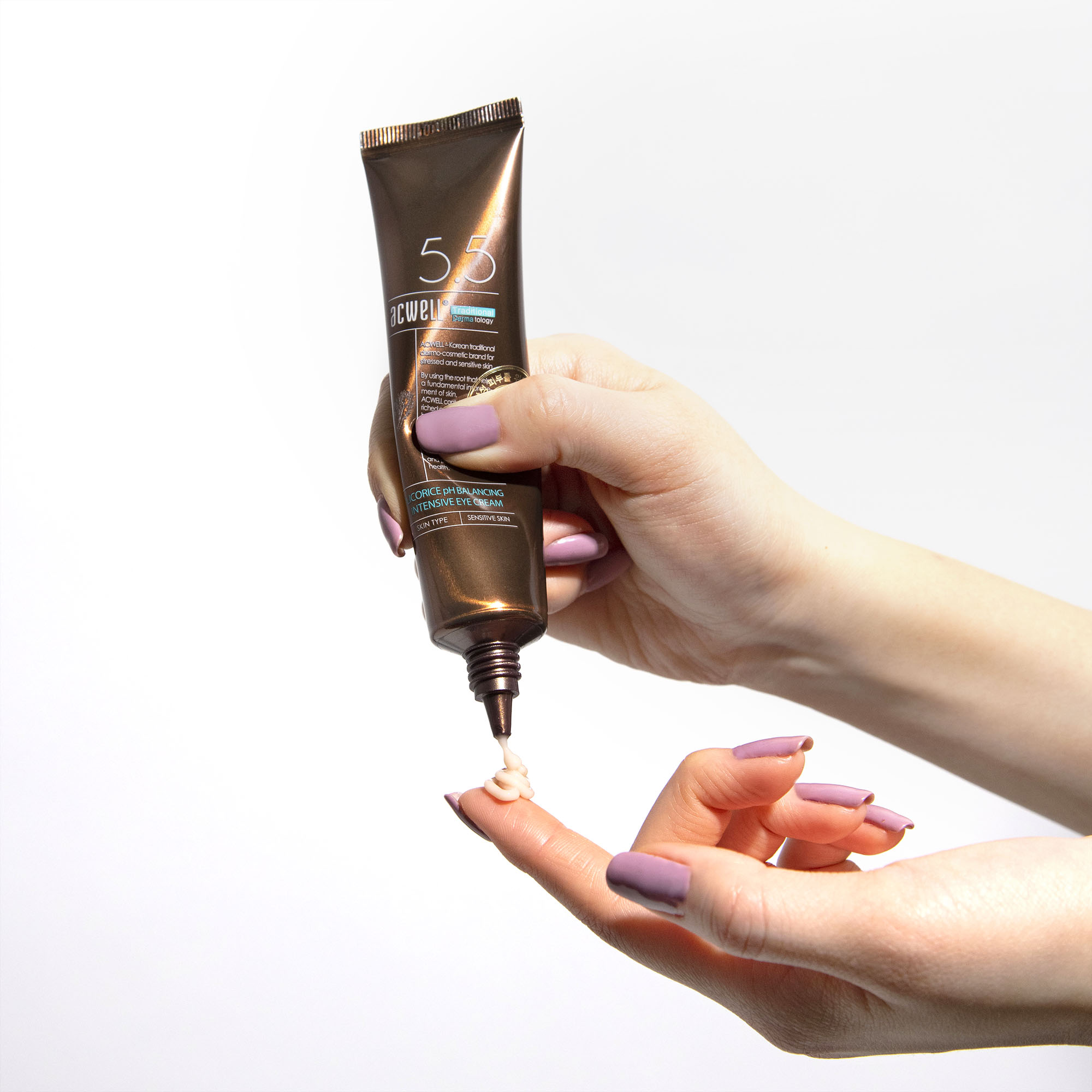Something we hear often from readers of the Klog is, “I don’t know if my eye cream is actually doing anything.” If this sounds like you, read on.
Keeping the skin around your eyes looking bright, firm, and smooth can take years off of your face, which is why using an eye cream is an important step in your routine. But if you’ve been applying it religiously and you’re not seeing these results, what gives?
We spoke with a board-certified dermatologist and an esthetician to get the scoop on the potential reasons why your eye cream may not be working for you. Below, we’ve outlined problems that inhibit an eye cream’s effectiveness and how you can get results.
You’re not giving your eye cream enough time to work.
Eye creams generally take four to six weeks for the active ingredients to make a noticeable difference on your skin, so think twice before ditching your eye cream if you haven’t given it adequate time to work.
You’re not pairing your eye cream with SPF.
You’ve likely heard before that wearing sunscreen is the best way to prevent wrinkles, and well, it’s true. “The benefits of the right eye cream go out the window if you don’t use them in connection with a sunscreen,” says Sarah Akram, a master esthetician based in Washington D.C.
To keep the area around your eyes smooth and young, be diligent about sunscreen and wear sunglasses with UV protection. You can also use a concealer that contains SPF under your eyes. Akram likes the Clé de Peau Concealer SPF 25.
Your eye cream doesn’t have the right ingredients for your skin concerns.
Using the right eye cream to target your skin care concerns is absolutely essential for seeing results.
“Seven out of ten first time clients I see are using eye cream products that lack key ingredients, including antioxidants such as vitamin E, C, peptides, or retinol which smooth, firm, and brighten skin around the eyes,” says Akram.
To determine the right ingredients to look for, first consider the specific concerns you want to tackle.
For dark circles, Dr. Debra Jaliman, an NYC-based dermatologist, recommends looking for eye cream products with niacinamide. For puffiness, she likes caffeine, and for moisture, she’s a fan of formulas with hyaluronic acid.
Try the Acwell Licorice pH Balancing Intensive Eye Cream. Formulated with licorice water and licorice extract, niacinamide, caffeine and sodium hyaluronate, this powerful eye cream will help brighten dark circles and hyperpigmentation, hydrate and depuff your eyes like magic.

For fine lines, Akram suggests a formula that’s loaded with antioxidants, peptides, and retinol like the C-Quence Eye Gel by Environ.
RELATED: How to Find the Right Eye Cream For Your Skin Concern
And just as it’s important to look for ingredients you want in your eye cream, it’s also key to look out for the ingredients that might work against you. For example, Dr. Jaliman recommends that those with milia (tiny cysts that are clogged pores), avoid greasy eye cream that contains pore-clogging ingredients. A lightweight, gentle eye cream like the Erborian Seve De Bamboo Eye Matte would be more ideal.
You have unrealistic expectations about your eye cream.
Unfortunately no skin care product can totally reverse the hands of time – there are limits. If you’re not getting the results you want, it may be time to seek a professional treatment. “Some think [eye cream] will get rid of deep crow’s feet, when what they really need is Botox,” says Dr. Jaliman.
You’re using too much eye cream.
So you’re using large portions of eye cream every night, and still not seeing results? As it turns out, the amount you’re using may actually be the problem. It’s easy to think that using more will lead to stronger results, but this actually isn’t the case.
While it’s okay to apply eye cream in the morning and at night, “using more doesn’t mean you will get a better result from your eye cream,” says Dr. Jaliman. “A pea-size is all you need”.
You’re just not getting enough sleep.
Of all the solutions to maximize the effectiveness of your eye cream, this is the one you have the most agency over. Getting a proper amount of sleep will do wonders for making your eyes look awake and bright. Taking care of yourself keeps your skin young and happy, too.
“Smoking, a poor diet, and improper sleep habits all contribute to poor skin health, particularly around the eyes,” says Akram. “I always say to my clients, ‘good skin health is similar to losing weight—you can’t out-run a poor diet.’ The right eye cream only works in concert with a good diet and sleep regimen.”
The Bottom Line
Eye cream is not often cheap, so you want to make sure it’s doing its job. Remember to consider your main skin concerns and active ingredients. Once you’ve found “the one”, don’t forget the SPF and your beauty rest.
Wondering why your cleanser isn’t working? Click here.
Wondering why your acne products aren’t working? Click here.
Wondering why your moisturizer isn’t working? Click here.


![[Klog] Why your eye cream isn’t working_1](https://theklog.co/wp-content/uploads/2019/06/Klog-Why-your-eye-cream-isn’t-working_1-1.jpg)













